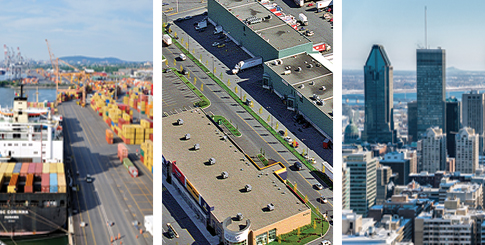A Prosperous Port
Thanks to its auspicious location and thriving container port, Montreal enjoys a booming international trade sector. With more than 5,500 miles (9,000 km) of coastline, Quebec borders the U.S. states of Maine, New Hampshire, Vermont, and New York to its south. This prime position allows for exports to markets across the U.S. East Coast, Midwest, and beyond.
As the top agri-food exporter in Canada, Quebec’s exports (which include fruit and vegetables) reached $8.2 billion in 2016, growing 9.4 percent over the previous year. More than 70 percent of the province’s agri-food products are exported to the United States. Quebec’s second largest agri-food importer is China, followed by Japan and the European Union.
A hefty portion of these agri-food exports pass through the Port of Montreal. Positioned along the St. Lawrence River, the Port of Montreal serves as a direct link between northeastern North America and the markets of Northern Europe, Asia, and the Mediterranean. Operated by the Montreal Port Authority (MPA), the Port is the second largest in Canada and handles both container and noncontainer cargo. Home to five container terminals, it connects Montreal to more than 140 countries across the globe.
The Port of Montreal also includes its own dockside rail network, connected to two national railroads and a highway system. Imports arriving at the port are ultimately distributed to 40 million consumers one day away by truck and 70 million consumers less than two days away by train. The port’s activities support 16,000 jobs and generate $2.1 billion in economic benefits each year.
In 2016, the MPA set a record for a third year in a row when 35.4 million metric tons of cargo moved through the port—a 10.4 percent jump over 2015. The port handled 13.1 million metric tons of containerized cargo that year, including fresh fruit and vegetables.
The Port of Montreal celebrated its golden anniversary in April 2017—50 years since it received its very first container. In 1967, the Port handled a total of 11,300 TEUs [20-foot equivalent units] for a single shipping line. Just a year later, the Port of Montreal established Canada’s first container terminal and Manchester Liners Ltd. launched a weekly container transport service to the United Kingdom.
Since then, nearly 35 million TEUs have passed through the port’s facilities. Today, the Port of Montreal is the only container port on the St. Lawrence River and the largest port in Eastern Canada.
All the Rage: Trends
Putting the move or remodel aside, the Quebec perishables trade has plenty going on to keep up with prevailing trends, such as skyrocketing demand for ethnic and specialty produce and sourcing local (though this time of year is scarce except greenhouse products).



